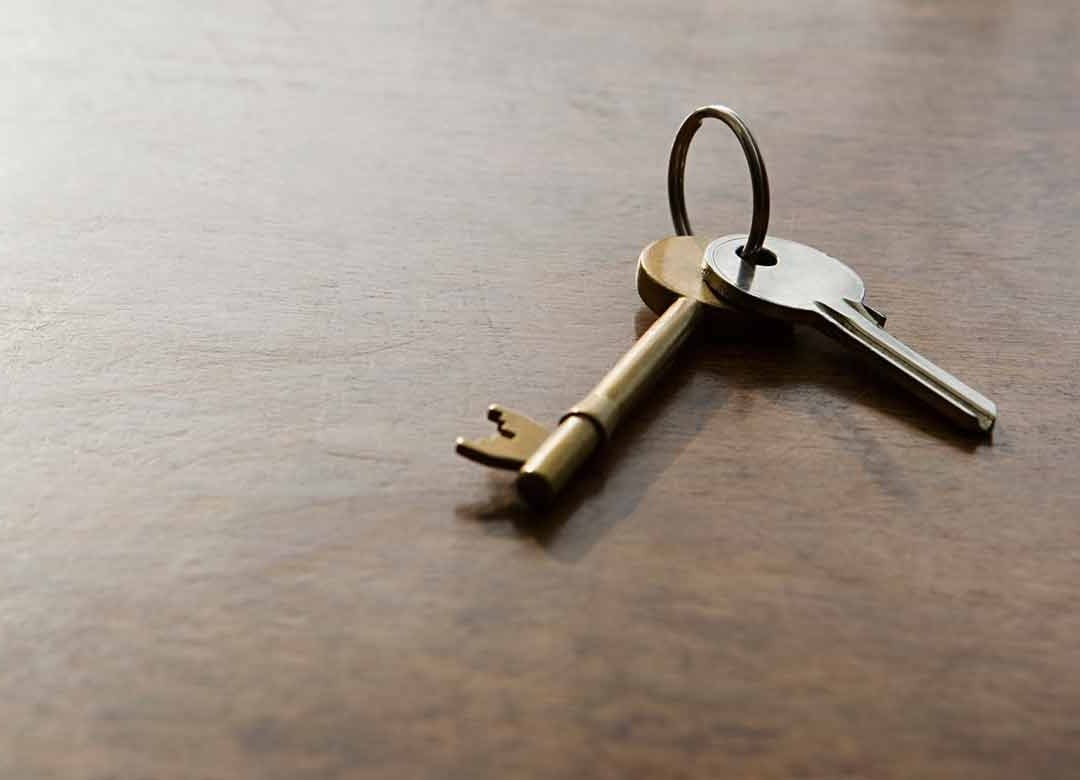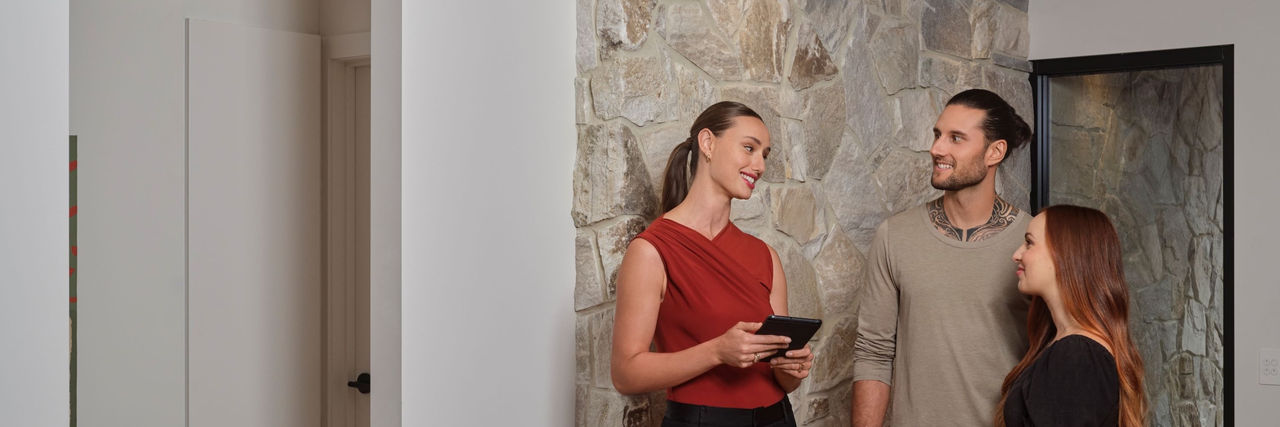First home buyer’s guide | Buying your first home - NAB
Where to start when buying your first home
Buying your first home can feel overwhelming and there are a lot of things to consider, from various costs involved to where and how you want to live. With a bit of planning and some well-considered decisions, you can make your dream of homeownership a reality. Let’s break down where to start.
Find out what you can afford to borrow
Figuring out what you can realistically afford is crucial if you want to avoid mortgage stress. This often means taking a close look at your finances, including your income, expenses and any existing debts. It’s also worth factoring in additional costs like legal fees, stamp duty, upfront costs and moving expenses. Using online calculators can give you an idea of how much you can borrow and what your monthly repayments are likely to be, helping to make sure you don’t overextend yourself financially. Knowing your budget upfront will help you focus on homes within your price range.
Get your deposit together
One of the biggest hurdles for first home buyers is saving for a deposit, as it’s often a large out of pocket expense. While 20% of the purchase price is the general rule for your house deposit, there are some options you can explore to lower your deposit:
- Check with your lender whether you’re eligible for Lenders Mortgage Insurance (LMI), what your LMI fee would be, and whether it’s the right option for you.
- If you need support getting your deposit together, you can check whether you qualify for the Australian Government 5% Deposit Scheme (formerly Home Guarantee Scheme), an initiative specifically for first home buyers and single parents.
When it comes to saving for a deposit, it’s worth sticking to a budget and creating money buckets. Every bit helps, so the sooner you start, the better.
Research the market
Before you dive into buying your first home, it’s crucial to do some homework. Start by getting a feel for the property market in your desired area. Does buying an apartment or a house make more sense? Review recent sales, current listings and price trends across different suburbs over time, using the free Property Insights report. This can help clarify what you can expect to pay and just how competitive the market is. It’s also a good idea to attend inspections and auctions to gain a better grasp of the market and see what you can get for the money you’re willing to spend.
Get a conditional approval
Getting a home loan pre-approval from a lender gives you a clear idea of how much you can borrow and also shows the seller that you’re a serious buyer. This step involves providing your financial details to a lender who will assess your situation and give you a pre-approval letter.
Engage the experts
For a smooth-sailing first home buying experience, be sure to find experts like a conveyancer or solicitor who can help you with transferring the legal ownership of the property. Also, ensure you have an accredited building and pest inspection expert handy to inspect the property as a condition of sale.
Find and buy your home
With a conditional approval in place, you can start house hunting. Check online listings, attend open houses and engage with real estate agents if you’re interested in putting in an offer. You’ll need to act quickly if you find a place you love, as good properties get snapped up quickly. The process of putting in an offer can feel nerve wracking, so it’s wise to have a solicitor or conveyancer review the sales contract. It’s important to make your offer ‘subject to finance’ and ‘subject to pest and building inspection’. Once accepted, you’ll need to pay the deposit using a bank cheque or bank transfer and sign the contract of sale. Now is a critical time to arrange a quote for home insurance. Alternatively, if you’re preparing for an auction, it’s worth understanding how they work. We’ve got a practical guide on buying at auction vs. private sale to help guide you better.
Finalising your application and documents
Once you’ve found your dream property and your offer is accepted, you’ll need full approval and to finalise your loan details with your banker. This stage is often referred to as unconditional approval.
Here’s what you need to know:
- Your lender will ask you a number of questions, and ask for supporting documents to confirm the information you provided to gain conditional approval.
- They’ll complete a valuation on the property you’ve purchased.
- Your banker will help you choose the right type of loan to meet your needs whether you want the certainty of a fixed rate loan or the flexibility to make additional payments with a variable rate loan with features like offset and redraw.
- Once your loan application and documents have been submitted, your lender will review and conduct the checks on their end before providing unconditional approval and your home loan offer documents.
- Your solicitor or conveyancer will help you complete any transfer forms such as stamp duty.
- Next, it’s time to review the details in your loan documents to make sure everything is in order before accepting them and returning them to your banker.
- Don’t forget to make sure you’ve organised home insurance, as your settlement could be delayed if this hasn’t been done.
Settlement and moving in
After settlement, the property officially becomes yours and the home buying process is complete! Before settlement occurs, it’s important that you:
- Arrange a pre-settlement inspection with the seller’s real estate agent.
- Have enough money in your nominated transaction account 48 hours before the settlement date – your solicitor will confirm how much you’ll need.
- Arrange for things like gas, electricity and internet to be connected at your new property for the day you move in and remember to change your postal address and redirect your mail.
The lender will arrange a day, time and place for settlement with your solicitor or conveyancer and they will let you know as soon as settlement is completed. Next, you can pick up your keys from the vendor’s real estate agent and move in!
Get support with your home loan
Congratulations! Now remember to set up your home loan to make sure it’s easy to manage and that you’re getting the most out of it.
Ready to purchase your home?
Talk to our home loan experts today.
Explore property and home buying guides
Home buying checklist: what to know before you buy
Use this checklist-style guide to help you plan, inspect and financially prepare for buying a house.
Ongoing costs of home ownership
Explore the ongoing costs that come with owning and maintaining a home in Australia.
How much do you need for a house deposit
Tips to help you save a deposit for a home loan.
Related products and services
Home loans
Home loans for every need with tools, calculators and guides to help you choose.
Home and Contents Insurance
Cover your home and contents with NAB insurance. Compare policies now.
Savings accounts
Whatever you're saving for, our savings accounts can help get you there sooner.
Contact us for home loan related queries
This is how you can get in touch.
Start a conversation with a banker
- Log into either NAB Internet Banking or the NAB app.
- Tap on the message icon.
- Type ‘speak to a person’ in the conversation window.
Call us
Speak to a home loan expert about a new or existing home loan.
Monday to Friday, 8:00am to 7:00pm (AEST/AEDT)
Saturday to Sunday, 9:00am to 6:00pm (AEST/AEDT)
Book an appointment
Make an appointment to see us at your nearest branch, ask a mobile banker to come to you or ask us to call you back.
Important information
Apologies but the Important Information section you are trying to view is not displaying properly at the moment. Please refresh the page or try again later.
The information contained in this article is intended to be of a general nature only. It has been prepared without taking into account any person’s objectives, financial situation or needs. Before acting on this information, NAB recommends that you consider whether it is appropriate for your circumstances. NAB recommends that you seek independent legal, financial and taxation advice before acting on any information in this article.





